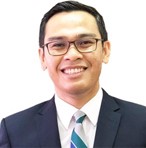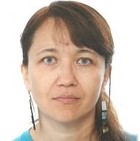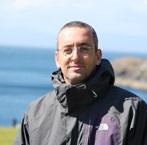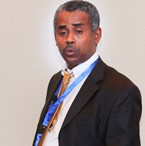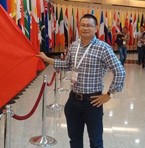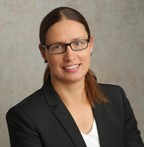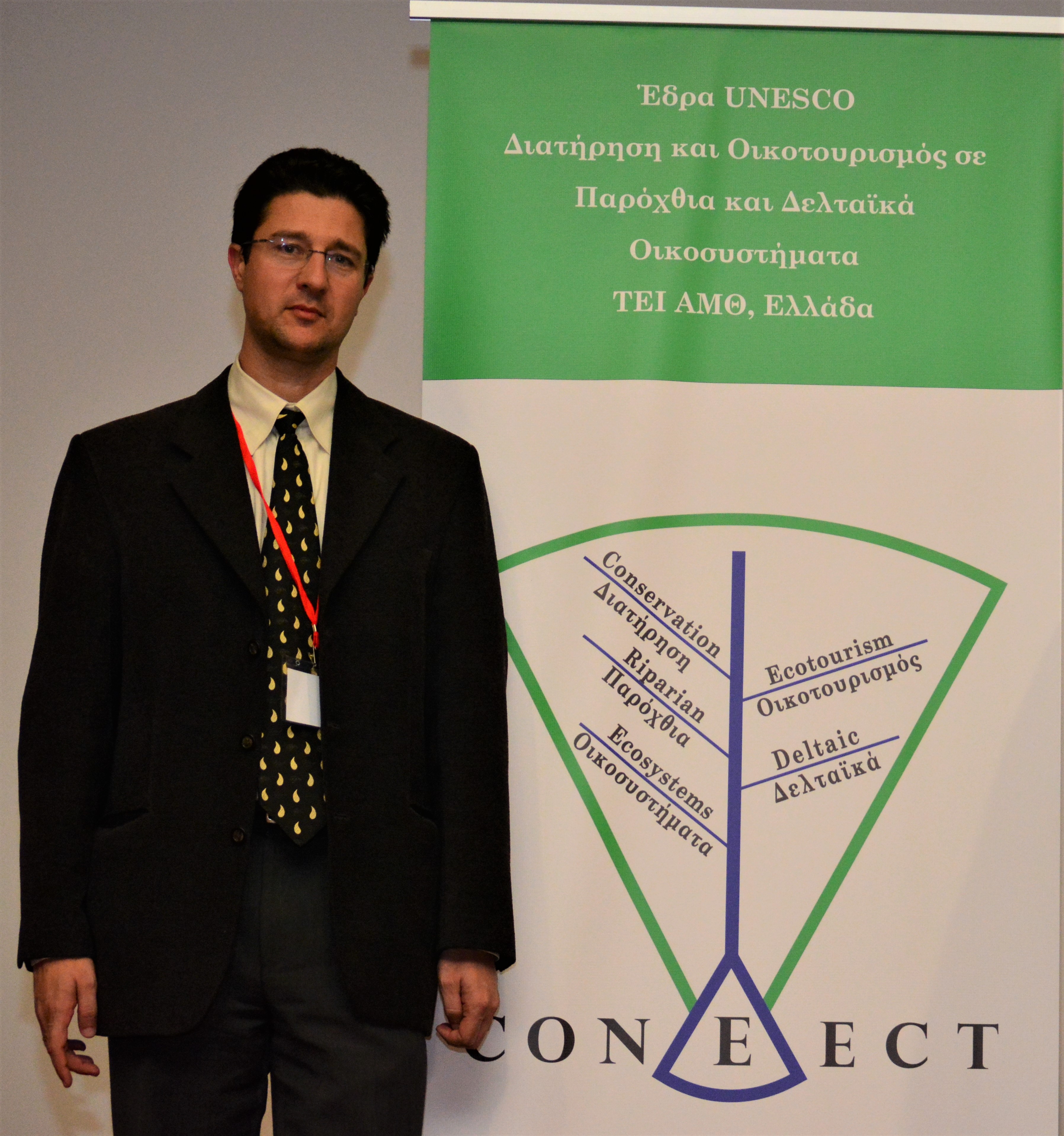Invited Speakers
Dr. Manuel J. Rodriguez
Professor, School of Urban and Regional Planning, Université Laval, CanadaSpeech Title: Emerging issues in monitoring drinking water quality from source to tap
Abstract: Emerging issues such as climate change impacts and the interest in new contaminants in water contribute to the need for more sophisticated water quality monitoring strategies. In Canada, most citizens live in municipalities where drinking water is supplied by surface water sources. Surface water vulnerability is particularly high during specific climatic events such as drought-rewetting cycles and freeze-thaw cycles. During sudden climatic events such as heavy rain, events of source water contamination can occur potentially impacting the performance of treatment plants and the quality of the distributed water to consumers. Indeed, climate events could affect the drinking water supply system in several ways and through all its steps, including at the source and during treatment and distribution. To ensure safe drinking water for consumers at all times, monitoring strategies for water quality should consider the different components of the multi-barrier approach: the source watershed, the water treatment plant and the municipal distribution network. Such monitoring strategies must consider various types of contaminants and indicators (chemical, microbiological, physical), representative locations for data collection to describe the spatial variability of water quality, and representative periods and frequencies for data collection to describe the temporal and seasonal variability of water quality. In the last five years, our research group has developed approaches, methodologies and techniques for water quality monitoring that allow generating data and knowledge useful for decision-making purposes. Various tools have been elaborated for water quality assessment, detection of contamination events, prioritizing of operational interventions, and identification of vulnerable populations to potential water quality failures. Spatio-temporal databases for numerous water quality parameters, including contaminants of emerging interest, have been developed during field sampling programs. Based on these data, diagnostic and predictive models have been developed for early warning purposes, monitoring prioritization and population exposure assessment to contaminants. In this conference, the approaches and phases for data generation, model development and decision-making tools elaboration will be presented. The presentation will be illustrated with real case studies in municipal drinking water utilities of Canada.
Dr. Ahmad Zaharin Aris
Professor, Department of Environmental Sciences, Faculty of Environmental Studies, Universiti Putra Malaysia, MalaysiaSpeech Title: Environmental pollution, daily exposure, and potential risk of endocrine disrupting compounds in water supply
Abstract: The worldwide extensive urbanization in terms of economy, industrial, and population have caused deterioration of environmental quality. Further, the issue concerns not only the environmental contamination level and ecological risks associated, but also human exposure via daily dietary intake. Prevalent contamination and potential risk of exposure of emerging contaminants i.e., endocrine disrupting compounds (EDCs) were observed in drinking water supply. This indicates inadequacy of the current treatment technologies and regulatory exercises in addressing the whole spectrum of water pollution and pollutants evolution, which requires development of strategies with application of methods and technologies to reduce the effects of pollution in the environment, particularly those having direct contact with humans such as water. Further, effective risk communication and governance are in need since the impacts might have been underestimated due to the expected relatively low knowledge and awareness.
Dr. Gordana Medunić
Professor, Department of Geology, Faculty of Science, University of Zagreb, CroatiaSpeech Title: Human and animal health risk posed by increased environmental selenium leached from karst coal deposits (Raša Bay, Adriatic Sea, Croatia)
Abstract: The Raša Bay (north Adriatic Sea, Croatia) has been receiving inorganic and organic pollutants by inflowing streams laden with untreated coal mine waste water discharges for decades. Local superhigh-organic-sulfur (SHOS) Raša coal is unique based on its anomalously high levels of S, Se, and U. The local area (some 600 km2) has experienced adverse effects of SHOS coal mining, preparation, combustion, waste storage, and transport in the past. Soil is severely polluted with S (up to 4.00%), Se (up to 6.80 mg/kg), Cd (up to 4.70 mg/kg), U (up to 25 mg/kg), and PAHs (up to 13,500 ng/g). Moreover, they were found to be increased in sediment, surface water, locally grown vegetables, and local birds. Decreased Se values in a coal-combustion waste, exposed to rain, indicates on potential leaking problems. Namely, the study area belongs to vulnerable karst environment which promotes Se mobility due to high Eh/pH conditions. Marine coastal systems are particularly vulnerable to contamination transported and discharged by inflowing rivers. Moreover, the study area is vulnerable karst which is highly susceptible to pollution due to its complex hydrodynamics and low filtration capacity. Hereby, the aim of my study is to evaluate an impact of karst groundwater circulation patterns on uranium and selenium hydrogeochemistry. Additionally, the content of selenium in the local environment, food, and animals, constantly under the influence of Raša coal, will be investigated. The study will primarily determine the content of selenium (and other elements) in the tissues of wild birds, as well as eating habits of the local population to determine the possible adverse effect of increased concentrations of selenium in food on the health of consumers. Field-work will be conducted on water discharges from closed Raša coal mines which still host some 4 million tons of coal. Potential health risks and the negative impact of both elements on human health are well documented in the literature. Coal is one of the significant sources of the two contaminants. Therefore, we will systematically investigate their behaviour and fate through a hydrogeochemical research. The study could have long term implications on canon of knowledge about the relevant research on metal(loid)s' (S, Se, U) cycles in natural water. The topic has not been addressed at all in terms of the study locality, partly due to analytical difficulties and lack of expertise, and partly due to a long period of restrictive regime in publishing papers on the problem of radioactivity in Croatia prior to 1990. The access to the locality was forbidden as certain horizons of SHOS coal were so radioactive that the Raša coal was planned to be exploited as a resource of uranium for nuclear power plants. This research will reveal levels of elements (primarily selenium) in tissues of wild birds and plant foods; based on eating habits of the local population, it will be possible to draw concrete conclusions about the possible adverse effects of the studied elements on their health.
Dr. Mingjie Chen
Senior Hydrogeologist, Water Research Center, Sultan Qaboos University, OmanSpeech Title: Optimize production-injection of a geothermal reservoir under geological uncertainty using surrogate models
Abstract: This study applies an efficient optimization method based on a multivariate adaptive regression spline (MARS) technique to determine the optimal design and engineering of production operation at a potential geothermal reservoir. The faster MARS-based statistical model is used as a surrogate for higher-fidelity physical models during computationally intensive optimization process. Its use allows for the exploration of the impacts of specific engineering design parameters in the context of geologic uncertainty as a means to both understand and maximize profitability of the production operation. The MARS model is developed from a training dataset generated by a finite set of computationally complex hydrothermal models applied to the reservoir. Its application reveals that the optimal engineering design variables can differ considerably assuming different choices of hydrothermal flow properties, which, in turn, indicates the importance of reducing the uncertainty of key geologic properties. The major uncertainty sources in the natural-system are identified and ranked first by an efficient MARS-enabled sensitivity quantification, which is then used to assist evaluating the effect of geological uncertainties on optimized results. The parameter sensitivity analysis suggests that groundwater circulation through high permeable structures, rather than heat conduction through impermeable granite, is the primary heat transfer method during geothermal extraction. Reservoir histories simulated using optimal parameters with different constraints are analysed and compared to investigate the longevity and maximum profit of the geothermal resources. The comparison shows that the longevity and profit are very likely to be overestimated by optimizations without appropriate constraints on natural conditions. In addition to geothermal energy production, this optimization approach can also be used to manage other geologic resource operations, such as fossil energy production or CO2 sequestration, under uncertain reservoir conditions.
Dr. Raphael Linker
Associate Professor, Faculty of Civil and Environmental Engineering, Technion – Israel Institute of Technology, IsraelSpeech Title: On the use of crop dynamic models for (sub-) optimal irrigation management
Abstract: According to the Food and Agriculture Organization, by 2030 two-thirds of the world population could be living under water stress conditions, i.e. in regions in which water withdrawal exceeds the renewable water resources by more than 20%. In terms of global water withdrawal, agriculture is the largest consumer of freshwater, accounting for 70% of the global withdrawn. The inefficient use of the fresh water resources threatens not only sustainable agricultural development but also overall economic growth and global stability. Maximizing the efficiency of water use in irrigated crops is therefore crucial. This talk will focus on ways to improve water use efficiency in agriculture by using mathematical crop models in the decision-making process. After presenting briefly the general mathematical framework, the talk will show through several examples how such models can be efficiently incorporated in decision-making processes at different levels, ranging from seasonal planning of water allocation between several crops to local, real-time irrigation scheduling in a specific field. The two main drawbacks commonly associated with such model-based frameworks - unreliable weather forecasts and imperfect models – will be discussed and ways to minimize the negative impact of these factors will be presented.
Dr. Yishai Netzer
Senior researcher, Agriculture Research Department, Eastern Research and Development Center, IsraelDepartment of Chemical engineering, Biotechnology and Materials, Ariel University, Israel
Speech Title: Advanced modelling water consumption of a Vitis vinifera cv. 'Cabernet Sauvignon' vines
Abstract: Skilled regulated deficit irrigation regime is the basis for controlling grape yield and wine quality. High accuracy of grapevine evapotranspiration (ETc) modelling serves as a foundation for precise and efficient irrigation calculation. ETc measurements of Vitis vinifera ‘Cabernet Sauvignon’ were conducted during 2013-2017 with 6 drainage lysimeters in the mountainous region in Israel, along with a continuous record of meteorological data. The effect and interactions of meteorological variables (MV) such as temperature, total solar radiation, relative humidity and wind speed, as well as Leaf Area Index (LAI) on ETc were established. Different time-series multiple regression models (machine learning and non-linear models) were used to determine the relative influence of MV and LAI on ETc during four growing seasons and suggest several types of forecasting models for a fifth season. Additionally, within-season temporal patterns and variations according to five phenological stages (based on berry development) were studied. Finally, a comparison between different sets of variables and different regression models was performed to evaluate the quality of model fitting for ETc forecasting purposes. The findings show LAI had a pronounced impact on ETc compared to MVs and was found to have a relative influence ranging between 62 and 86% for the different growing seasons. Within each season, each phenological stage was characterized by a unique composition of relative importance of the predictor variables (MV, LAI and temporal predictors), with ETc variability being largely explained by the temporal variables. All non-linear regression models produced reliable results. Adding LAI data into the regression models resulted in improved models with higher levels of predictive performance. Using time-series statistics to explore meteorological and vegetative temporal characteristics, patterns, interrelations and relative influence on ETc may facilitate the understanding of plant response to meteorological conditions and ETc dynamics according to vegetative development, and assist in generating more precise and skillful applications of irrigation methods in the future.
Dr. Komali Kantamaneni
Research Fellow, Warsash School of Maritime Science and Engineering, Solent University, Southampton, United KingdomSpeech Title: Assessment of physical and economic coastal vulnerability of South Asia
Abstract: Coastal environments are specifically vulnerable to the effects of natural disasters; partly due to rapid urbanisation and related economic activities such as agriculture, aquaculture, tourism, industries, trades and transportation. In the current scenario, the environmental stresses on coastal zones are increasing considerably in terms of physical, social and economic variables. Accordingly, this study examines coastal vulnerability factors and their influence along the South Asian coastal region. South Asia has been exposed to frequent natural disasters and diverse hazards due to variations in the geographical, geological, and bathymetric features. The current research analyses the drivers and effects of hazards and vulnerabilities in South Asia in both physical and socio-economic perspectives. The findings will be useful for stakeholders seeking to reduce or ameliorate the impact of hazards and coastal disasters and their impacts on the South Asian economy, environment, and population.
Dr. Alina Bărbulescu
Associate Professor, Doctoral School of Technical University of Civil Engineering, Bucharest, Romania and Ovidius University of Constanta, RomaniaSpeech Title: New mathematical approach of the regional precipitation estimation
Abstract: Rainfall estimating is important for flood forecasting, water balance computation, water resources and drought management. Estimating, modelling and predicting the precipitation evolution are of practical importance, especially in arid regions. Geostatistics offers a range of methods to estimate the precipitation at regional scale, but sometimes these methods require additional data that are not always available or very complicated algorithms. In this context, we present new methods for estimating the regional precipitations that are easy to implement and use. They extend the Most Probable Precipitation Method (MPPM), are based on matrix computation and Swarm Particle Optimization. Better results are obtained compared with the ordinary kriging, IDW and Thiessen polygons method.
Dr. Rosangela F. Sviercoski
Visiting Professor, Department of Mathematics, Oakland University, USAAssociate Scientist, Bulgarian Academy of Sciences, Bulgaria
Speech Title: Modelling the Multiphysics Interactions Between Water and Heat Transport in the Shallow Subsurface: Towards Coupling Surface and Atmosphere Processes
Abstract: In this talk, I will present the development and validation of a new multiscale modelling framework for the multidimensional coupled system describing soil moisture and heat interactions in a shallow soil profile, capable of predicting upscaled soil-hydrological fluxes under different hydro-climate conditions. The targeted problem is of practical interest as accurate assessments of spatial and temporal variations of soil moisture and infiltration/evaporation fluxes are critical for many environmental and hydroclimatic applications.
Currently, existing models are limited to solving this highly nonlinear water and vapor phases, without addressing the various spatial and temporal scales involved. Moreover, when multiscale phenomena are considered in such systems, the high computational cost for such calculations are infeasible to consider. This new multidimensional multiscale coupled system and its respective upscaled, and low computational cost version, use air temperature, solar radiation, and precipitation as parameters to determine the boundary conditions, through the upscaled energy balance equation. This formulation makes it more realistic and ready for coupling with atmosphere processes. The accuracy of this new upscaled formulation has been demonstrated by comparing with both, the fine-scale model and with field data. Thus, the proposed system presents the mathematical and physical based tools to better predict a key boundary condition concerning the evaporation (and water) budget to be used into local and large-scale global climate modelling efforts to better quantify the change of the climate, its forecast and its impact.
Dr. Minjiao Lu
Professor, Department of Civil and Environmental Engineering, Nagaoka University of Technology, JapanSpeech Title: Removal of errors in dielectrically observed soil water content caused by temperature effects and its impacts on soil moisture applications
Abstract: Soil moisture is a key variable controlling the exchange of energy and water fluxes between the land surface and atmosphere. Dielectric sensors have been widely used for long term none destructive field soil moisture measurements in small to large scale moisture monitoring networks. However, it is found that these sensors are influenced by soil temperature fluctuations, referred to as temperature effects. An effective temperature correction method for dielectric sensors is important to ensure the accuracy of soil water content (SWC) measurements. This study attempted to develop a general temperature correction method for dielectric sensors which can be commonly used regardless of the differences in sensor type, climatic conditions and soil type without rainfall data. In this work an automated general temperature correction method was developed by adopting previously developed temperature correction algorithms using time domain reflectometry (TDR) measurements to ThetaProbe ML2X, Stevens Hydra probe II and Decagon Devices EC-TM sensor measurements. This temperature correction method was evaluated using 34 stations from the International Soil Moisture Monitoring Network and another nine stations from a local soil moisture monitoring network in Mongolia. Soil moisture monitoring networks used in this study cover four major climates and six major soil types. Results indicated that the automated temperature correction algorithms developed in this study can eliminate temperature effects from dielectric sensor measurements successfully even without on-site rainfall data. Furthermore, it has been found that actual daily average of SWC has been changed due to temperature effects of dielectric sensors with a significant error factor comparable to ±1% manufacturer’s accuracy. Finally, impacts of this removal on rainfall estimation from soil moisture data by SM2RAIN and satellite soil moisture products, AMSR, SMOS and SMAP will be shown.
Dr. M. E. Ahmed
Research Scientist, Water Research Center (WRC), Kuwait Institute for Scientific Research, KuwaitSpeech Title: Performance Assessment of Medium Size Industrial Wastewater Treatment Plant
Abstract: In this study, the performance of a medium sized industrial wastewater treatment plant (WWTP), in Kuwait, was investigated. The industrial wastewater treatment plant is of 7,500 m3/d capacity, and its treatment scheme is composed of primary reception lagoons, primary chemical treatment with dissolved air flotation (DAF) units, and an activated sludge process. With the overall objective of identifying retrofitting scenarios for the plant, the study objectives were to assess the current bottlenecks, identify specific performance related operational parameters, and propose options for expansion or ex-site replication. The wastewater treatment plant was operated well below its capacity (3,500 to 5,000 m3/d), it was found to produce excessive sludge after the primary chemical treatment due to use of chemicals and lower efficiency of the activated sludge process due to low biological community population caused by the inhibitive chemical contained in the industrial wastewater and introduced by the primary chemical treatment. Potential retrofitting scenarios were found to be the segregation of the received industrial wastewater by industry type, replacement of the chemical treatment by primary treatment stage with anaerobic biological reactor, and the use of an integrated film process instead of the conventional activated sludge process. It was found that through the use of the integrated film process (aerobic), the effluent could achieve 20 mg/l COD and dissolved oxygen > 2.0 mg/l.
Dr. VO Ngoc Duong
Professor, Faculty of Water Resources Engineering, The University of Da Nang – University of Science and Technology, Viet NamSpeech Title: Hydrological modeling for ungauged catchment: a fully distributed model approach for monsoon climate area
Abstract: Hydrological analysis plays an important role in catchment planning and natural disaster management. There are many methods to deal with those tasks, however numerical modeling is considered as a simple, economical and effective one for providing the basic insight of hydrological processes in catchment scale. Results from an accurate model may help to estimate the impact of natural phenomena on properties and human. The hydrological model furthermore guides human to answer on how to prevent the effects of those hazards on human society. Moreover, the efficiency of hydrological modeling nonetheless depends mainly on the accuracy of many factors, especially the data inputs which are not always easy to fully obtain in developing countries and large catchments. Although with the strong development of specialized equipment, most of the catchments in the world are still ungauged. It leads to the big challenges to build fully made hydrological modeling in those catchments when the local runoff data is lack seriously for calibrating the model parameters. In this study, the difficulties in hydrological modeling about the lack of data will be analyzed for Vietnam central region. The experience from 8 catchments with different scales and data situations over Vietnam central are showcased. The full distribution model performance is also demonstrated for its preeminence towards the lack of data monsoon climate catchments.
Dr. Francesco Gallerano
Professor, Department of Civil, Constructional and Environmental Engineering, “Sapienza” University of Rome, ItalySpeech Title:
Dr. Masaru Morita
Professor, Department of Civil Engineering, Shibaura Institute of Technology, Tokyo, JapanSpeech Title: Uncertainty quantification of inundation damage estimation for urban flood risk management
Abstract: The study presents a method to quantify the uncertainty associated with inundation damage data for an urban catchment when undertaking stormwater drainage design and management. Usually flood damage is estimated by multiplying the inundated asset value by the damage rate corresponding to the inundation depth. Figure 1 shows an example of inundation depth – damage rate relation for the household articles of a private house as a logistic curve on the basis of a national government survey. The scatter of the data around the estimated curve that means the uncertainty of the damage rate can be represented by using a suitable probability distribution. The uncertainty of the damage rates and the asset values are described by probability distributions estimated from an analysis of actual flood damage data from the national government survey. With the presence of uncertainty in damage rate and asset value, the damage potential curve defining the damage-frequency relationship is no longer a deterministic single-valued curve. Through Monte Carlo simulation which incorporates the uncertainty of the inundation damage from the damage rate and asset value, a probabilistic damage potential relation can be established which can be expressed in terms of a series of curves with different percentile levels. The method is demonstrated through the establishment of probabilistic damage potential curves for a typical urban catchment, the Zenpukuji river basin in the Tokyo Metropolis, under two cases, namely, with and without a planned flood control reservoir.
Dr. Tosiyuki Nakaegawa
Head, Applied Meteorology Laboratory at Meteorological Research Institute, Japan Meteorological Agency, JapanSpeech Title: How do climate scientists answer the impact of recent global warming on disastrous precipitation extremes?
Abstract: Global societies have recognized the importance of impacts of climate changes on our lives and therefore the Paris Agreement has entered effect in 2016. The goal to keep the increase in global average temperature to well below 2 °C above pre-industrial levels is a challenging because novel technological evolutions are required to make it possible. Therefore, we can never go to the future without adaptations to climate changes to cope with. Reliable studies on these topics depend on reliable future climate projections with small uncertainties, and atmospheric science community is tackling this big issue.
Japan has experienced record-breaking torrential precipitation causing disasters for recent years as well as many countries in the world: Heavy rain in northern Kyushu Island in July 2017, Heavy rain in July 2018, Typhoon Faxai in 2019, and Typhoon Hagibis in 2019. One may wonder if this frequency and record-breaking intensity of disastrous precipitation occur by chance or an underlying cause, global warming. Climate scientists were interviewed about the cause of recent disastrous precipitation since the begging of this century but did not have a good answer. Instead, they provided information about the extreme precipitation in late 21st century based on the Intergovernmental Panel on Climate Change (IPCC) assessment reports.
New methodology to answering these questions have been emerging for a decade: event attributions. This methodology has two approaches: storyline approach and probabilistic approach. In the former, two predictions as initial value problem between under current on-going warming and non-warming conditions are compared to estimate the impact of global warming on an extreme precipitation event occurred in a real world with a regional climate model focusing on a target region. On the other hand, in the latter, two sets of huge ensemble simulations as boundary value problem with current on-going warming and non-warming conditions with a combination of a global climate model and a regional climate model. The former approach was applied to the Heavy rain in July 2018. We performed two simulations: a current on-going warming simulation with observations as they are and non-warming simulation with elimination of linear trends of summer-mean/monthly-mean temperature from 1980 to 2018. The current on-going warming simulation showed the increases in total precipitation of the Heavy rain in July 2018 by approximately 6.7% compared to the non-warming simulation.
The latter approach was applied to heavy rains in Kyushu Island to support the Heavy rain in northern Kyusyu Island in July 2017. Stationary weather fronts and typhoons bring heavy precipitation in western and eastern sides of the mountain ranges in the Kyusyu Island and have different changes under a current on-going global warming. Therefore, the changes in heavy precipitation over western and eastern sides of the mountain ranges are also different. We also investigated future projections of heavy precipitation in Kanto and associated weather patterns by large ensemble high-resolution with another approach.
Dr. Sonja Bauer
Proferssor, Faculty of Geomatics, Computer Sciences and Mathematics, Hochschule für Technik Stuttgart (University of Applied Sciences), GermanySpeech Title: Consolidating rural and water-scarce regions of emerging countries by reusing treated wastewater
Abstract: Rural areas are generally characterized by agricultural land use and a low population density. Especially, in developing and emerging countries such regions often face the challenge of rural depopulation due to a lack of employment and access to basic infrastructural facilities (e.g. secure water supply and disposal). For instance, China the most populous country in the world, with ever-increasing urbanization has to deal with this challenge. Approximately 90 % of Chinese villages have a lack of drainage channels and wastewater treatment facilities. Additionally, the effects of a worsening climate change such as increasing periods of drought will affect agricultural production. Nevertheless, China has to preserve the agricultural sector to feed its huge population. As agriculture is the greatest global water user, with 70 % of available water required for this sector, reusing wastewater for irrigation is a possibility to contribute to food safety. In this context, China has by far the highest irrigation rates with untreated wastewater. As the use of treated wastewater in agriculture benefits human health as well as environmental and economic issues, water-reuse is becoming increasingly important. However, without the necessary “wastewater, and thus reuse water producers” like housing areas, there is not enough wastewater available that can be treated and provided for irrigation. Thus, a holistic water-reuse concept for rural areas could be developed. The case study of the city of Wuwei is taken into account to develop conceivable solutions. The city is located in a water-scarce region in northwest China. The region is also famous for growing fruits, vegetables and flowers. By implementing water-reuse, for instance, agricultural crops in horticultural tunnels can be irrigated with treated municipal wastewater. This drives the agricultural sector and will offer more jobs. This leads in turn to the development of new housing areas and hinders the rural depopulation.
Dr. Andrew Tirrell
Department of Political Science and International Relations, University of San Diego, USASpeech Title: Sociocultural Institutions and Fisheries Management
Abstract: The success of fisheries management regimes is often attributed to the design and implementation of regulatory tools. While sound design and effective implementation are crucial elements of any successful regulatory action, the social, cultural, and political institutions of those communities targeted by environmental governance also play an important role. Regulatory regimes can only succeed when those governed by them at the very least comply, and ideally cooperate. Through an engaging, ethnographic approach, this book investigates how institutions, at various levels of scale and formality, work to determine the degree of compliance and/or cooperation that fisheries stakeholders offer. That is, to what extent do differences in informal social, cultural, and political institutions affect inshore fishing community cooperation with centralized, quota-based national fisheries regimes?
Using data collected through in-depth interviews with a cross-section of fisheries stakeholders in several studies, the research suggests three major findings. First, sociocultural institutions play a much larger causal role in determining community cooperation with fisheries policies than natural resource management scholars and policymakers recognize. Second, levels of cooperation impact both the latitude that fisheries managers enjoy and the effectiveness of their policies. Third, the amount of trust afforded to fisheries managers (and the perceived legitimacy of their policies) by fishing communities is influenced by sociocultural institutions, but trust and perceptions of legitimacy can also be increased or eroded by policy choices made by fisheries managers.
Dr. Huang Yuk Feng
Associate Professor,Department of Civil Engineering, Lee Kong Chian Faculty of Engineering and Science, Universiti Tunku Abdul Rahman (UTAR), MalaysiaSpeech Title: Reference evapotranspiration estimation using adaptive neuro-fuzzy inference system with limited meteorological data
Abstract: Machine learning tools are extremely useful for the estimation and modelling of hydrological processes such as evapotranspiration (ET). In this study, reference evapotranspiration (ET0) in Labuan located in the East Malaysia was estimated using an artificial neuro-fuzzy inference system (ANFIS). In order to investigate the feasibility of the ANFIS model for a wide temporal range, daily meteorological data collected at Station 96465 (Labuan) from year 2014 to 2018 were divided on an annual basis. ANFIS models were trained using data from different years as well as varying combinations of one climatic parameter with solar radiation. The study revealed that the ANFIS model was capable of performing accurate estimation when only one year of training data were used where errors of less than 5 % and NSE above 0.950 were achieved. This finding could be useful for new meteorological stations where data are limited. Furthermore, solar radiation and minimum temperature were deemed to be the best input combination because of their distinguishable characteristics. Maximum temperature which highly overlaps solar radiation in nature was found the worst complementary input. However, it is important to note that the importance of climatic parameters could be affected by extreme weather conditions.
Dr. George N. Zaimes
Deputy Chair, UNESCO Chair Con-E-Ect, Conservation and Ecotourism of Riparian and Deltaic Ecosystems, Director of GERi Laband Assistant Professor, Department of Forestry and Natural Environment, International Hellenic University, 1st km Drama- Microhoriou, Drama, 66100, GREECE
Speech Title: Targeted Placement of Soil Erosion Prevention Works After Wildfires
Abstract: Anthropogenic activities and climate change have accelerated soil erosion in the Mediterranean. In the region, erosion rates are further exacerbated due to frequent wildfires and flash floods. Soil bioengineering works and nature-based solutions need to be placed in targeted areas to provide the greatest erosion control in the burned areas. The purpose of this study was to provide a targeted approach by utilizing spatial software along with field measurements to place optimally soil erosion prevention works. Specifically, the Gavrilovic soil erosion equation was implemented within the Geographical Information System (GIS) to estimate the areas of greatest erosion potential. The study area was Prinos watershed of Thasos Island in Greece that was burned in the summer of 2017. To run the soil erosion equation in GIS, different layers of data were collected or developed. Visual field measurements were taken to estimate the erosion potential factor. The results indicated the areas with the greatest soil erosion and allowed to pinpoint the location for the soil bioengineering works. The recommended works were wooden dam and log erosion barriers. This method could be used by the Greek Forest Service to promote the sustainable restoration of burned areas.
Dr. Panayiotis Diplas
P.C. Rossin Professor and Chair,Department of Civil and Environmental Engineering, Lehigh University, USA
Speech Title: Sequences of turbulent quadrant events and applied forces during sediment particle entrainment
Abstract: The entrainment of sediment particles represents one of the long-standing issues in water resources and environmental engineering areas. The difficulty in predicting particle entrainment resides mostly in the uncertainties of turbulent flows, particularly for the random energetic turbulent structures and corresponding fluctuations of flow velocities that impact sediment particles. Most recently, a shift from the force-dominated model to the impulse- or energy-based model has been promoted in an attempt to better account for the underlying mechanism of entrainment and, thus, attaining more accurate predictions on the threshold of motion conditions. This study contributes to such efforts by highlighting the sequences of flow velocity and hydrodynamic pressure recorded over the entrainment of particles. The advantage of using this sequence approach is twofold. First, it accounts for the duration aspect of applied forces (estimated from pressure integration), which, combined with force magnitude, yields a more versatile and consistent criterion of particle entrainment based on the impulse model. Second, it captures a time series of variations in flow velocity as turbulent structures sweep through the near-bed region and mobilize particles. This provides a more comprehensive description of fluid motion than treating it as a collection of isolated incidents occurring during the entrainment process. Specifically, the data used here are collected simultaneously through LDV and pressure transducers at a sampling rate of 250 Hz, sufficiently high to resolve turbulence characteristics that are capable of displacing sediment particles. Although the observed pressure sequences are highly related to the coincident velocity sequences, details of these records exhibit a discrepancy in the higher frequency ranges of turbulent fluctuations. Pressure response appears to lose high frequency components shown in the flow velocity variations—a main reason that velocity history alone cannot fully represent the hydrodynamic impact experienced by sediment particles. To overcome this limitation of velocity sequences, we propose to use pressure sequences as an additional means of accounting for the mechanistic aspects of entrainment. The coupled velocity and pressure sequences provide a more comprehensive perspective on the processes of particle displacement.
Keywords: Qudrant sequences, Particle entrainment, Sediment transport, Turbulence
Dr. Mery Malandrino
Associate Professor, Chemistry Department, University of Turin, ItalySpeech Title: Dynamics of inorganic components in lacustrine ecosystems from Terra Nova Bay, Antarctica
Abstract: Antarctica is one of the most pristine places on our Planet, where natural background levels of the elements can still be determined. The element distribution in the separate components of the Antarctic ecosystem represents the result of natural processes. The determination of element concentrations in different Antarctic lacustrine components for a relatively long period of time allows us to detect whether this ecosystem is polluted from human activities or, conversely, to confirm the absence of local and/or global anthropogenic contamination in the Antarctic areas investigated, to understand the biogeochemical cycle of the elements in this ecosystem and identify the baseline concentrations in these compartments. For these reasons, we have studied different Antarctic lacustrine matrices in several projects within the framework of the Italian National Antarctic Research Program. In particular, we have determined the element composition in water, sediment, algae and suspended particulate matter samples in six shallow Antarctic lakes located in Terra Nova Bay, namely Carezza, Edmonson Point 14 and 15a, Inexpressible Island, Tarn Flat and Gondwana, and in moss and soil samples collected near the these lakes. In these studies, we found that the lake water composition is mainly influenced by sea spray and lake geographical position and partially by meltwater input. The lacustrine sediments and soils sampled around the lakes show a similar mineralogical and chemical composition, as evidence that rock- and soil-weathering processes occur only during the warm summer periods, when the lakes are partially ice-free. Finally, trace element levels, mainly those of heavy metals, are very low and this can be considered a confirmation of absence of local and global anthropic contamination due to metal ions. Our results represent new important data about metal concentrations in lacustrine systems in Antarctica, furnishing ranges of values that can be considered as a reference. These data, therefore, could be used to detect or monitor future local and/or global anthropogenic contaminations.
Keywords: Lacustrine waters; Suspended particulate material; Lake sediments; Terra Nova Bay (Antarctica); Elements; Pattern Recognition

